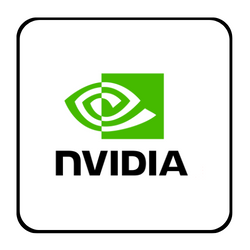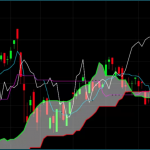Generative AI: A New Frontier
Generative AI has emerged as a significant trend, representing the next frontier of AI. It builds upon existing technologies like applied AI and industrializing machine learning.
Interest in generative AI increased threefold from 2021 to 2022, and it’s poised to add as much as $4.4 trillion in economic value. This value comes from specific use cases and more diffuse uses, such as assisting with email drafts to increase productivity.
Example: Generative AI in Business
Generative AI can reduce application development time and bring powerful capabilities to non-technical users. It can unlock significant value but also requires understanding the economic significance and growth potential that underlying AI technologies can bring to various industries.
2. Investment Trends
Investment in most tech trends tightened year over year, but the potential for future growth remains high. Absolute investments remained strong in 2022, at more than $1 trillion combined. Trust architectures and digital identity grew the most, increasing by nearly 50 percent. Investment in trends like applied AI, advanced connectivity, and cloud and edge computing declined, likely due to their maturity.
Example: Investment in Applied AI
While investment in applied AI may have declined, the technology’s maturity means it can scale further with lower marginal investment. This indicates continued growth and mainstream adoption.
3. Portfolio-Oriented Investment
Organizations should focus on a portfolio-oriented investment across tech trends most important to their business. Technologies like cloud and edge computing and the future of bioengineering have shown steady increases in innovation and continue to have expanded use cases.
Example: Edge Computing
Edge computing is projected to win double-digit growth globally over the next five years, with more than 400 edge use cases identified across various industries.
4. Tech Talent Dynamics
The talent market plays a crucial role in developing a competitive edge. There’s a wide gap between the demand for skills needed to capture value from tech trends and available talent. Job postings in fields related to tech trends grew by 15 percent between 2021 and 2022, with applied AI and next-generation software development posting nearly one million jobs.
Example: Talent Crunch in Cloud Computing
The shortage of qualified talent has been a limiting factor in growth, particularly in areas like cloud computing and industrializing machine learning, required across most industries.
Conclusion
The AI market in 2023 is characterized by the emergence of generative AI, shifts in investment trends, the importance of portfolio-oriented investment, and the dynamics of tech talent. Understanding these trends and their implications is essential for businesses seeking to innovate and achieve sustainable growth.
Additional Links:
- Generative AI and other foundational models
- The state of AI in 2023: Generative AI’s breakout year
- The economic potential of generative AI: The next productivity frontier
NVIDIA Analysis for August 2023
Company Overview
NVIDIA Corporation, headquartered in Santa Clara, California, is a leading player in the design and manufacture of computer graphics processors, chipsets, and related multimedia software. The company operates through two main segments: Graphics Processing Unit (GPU) and Tegra Processor.
Stock Performance
As of August 9, 2023, NVIDIA’s share price stands at $425.54, marking a decrease of 4.72%. The company’s 52-week range is between $108.13 and $480.88, with a market capitalization of $1.05 trillion.
Product Portfolio
NVIDIA’s GPU segment includes various product brands targeting specialized markets:
- GeForce: Aimed at gamers.
- Quadro: Designed for professional designers.
- Tesla and DGX: Catering to AI data scientists and big data researchers.
- GRID: Serving cloud-based visual computing users.
The Tegra Processor segment integrates an entire computer onto a single chip, incorporating GPUs and multi-core CPUs to drive supercomputing for various applications.
Financial Summary
- Revenue: $27 billion
- Assets: $41.2 billion
- Profits: $4.4 billion
- Dividends per Share: $0.16
- Dividend Yield: 0.04%
- P/E Ratio (TTM): 222.13
- Forward P/E: 45.23
Industry Recognition
NVIDIA ranks #241 on the Global 2000 list for 2023 and #92 on the Best Employers for New Grads list in 2023.
Valuation Measures
- Price to Sales (TTM): 40.75
- Price to Book Value (TTM): 42.92
- Price to Tangible Book Value (TTM): 56.73
- Total Enterprise Value to EBIT (TTM): 233.36
- Total Enterprise Value to EBITDA (TTM): 166.59
- Total Enterprise Value to Total Revenue (TTM): 40.54
Conclusion
NVIDIA continues to be a dominant player in the GPU market, with a diverse product portfolio catering to various specialized markets.
The company’s strong financial performance, coupled with its innovative approach to GPU and Tegra Processor technologies, positions it well for future growth.
The recent decline in share price may present an investment opportunity, but a detailed analysis of market conditions and NVIDIA’s strategic direction would be necessary for an informed decision.
AMD (Advanced Micro Devices) Analysis for August 2023
Company Overview
Advanced Micro Devices, Inc. (AMD) is a global semiconductor company headquartered in Santa Clara, California. The company operates through four main segments: Data Center, Client, Gaming, and Embedded.
- Data Center: Includes server central processing units (CPUs), graphics processing units (GPUs), data processing units (DPUs), field programmable gate arrays (FPGAs), and adaptive system-on-a-chip (SoC) products for data centers.
- Client: Comprises CPUs, accelerated processing units (APUs) that integrate microprocessors and GPUs, and chipsets for desktop and notebook personal computers.
- Gaming: Encompasses discrete GPUs, semi-custom SoC products, and development services.
- Embedded: Primarily includes embedded CPUs and GPUs, FPGAs, and adaptive SoC products.
Key Financials
- Revenue (2022): $23.6 billion
- Gross Profit (2022): $10.6 billion
- Net Income (2022): $1.3 billion
- Total Assets (2022): $67.6 billion
- Total Debt (2022): $2.5 billion
- Total Liabilities (2022): $12.8 billion
- Cash from Operating Activities (2022): $3.6 billion
Stock Performance
- Latest Trade Price: $110.47 (as of Aug 10, 2023)
- 52 Week Range: $54.57 – $132.83
- Market Cap: $182.9 billion
- Forward P/E: 41.19
Key Ratios and Metrics
- Price to Sales (TTM): 8.36
- Price to Book (Quarterly): 3.31
- Price to Cash Flow (Per Share TTM): 43.80
- Total Debt/Total Equity (Quarterly): 4.47
- Long Term Debt/Equity (Quarterly): 3.11
- Return On Investment (TTM): -0.06
- Return On Equity (TTM): -0.06
Recent News and Developments
- AMD’s AI Chip Targets: Analysts have expressed concerns that AMD’s AI chip targets may be ambitious, leading to a fall in shares (source).
- AMD’s AI Chip Debut: AMD plans to debut its AI chip by year-end and sees significant opportunities in the China AI market (source).
Executive Leadership
- Lisa T. Su: Chairman of the Board, Chief Executive Officer
- Victor Peng: President
- Jean Hu: Chief Financial Officer, Executive Vice President, Treasurer
- Mark D. Papermaster: Chief Technology Officer, Executive Vice President – Technology and Engineering
Conclusion
AMD continues to be a key player in the global semiconductor industry, with a diverse product portfolio catering to various markets, including data centers, client computing, gaming, and embedded systems. The company’s financial performance shows steady growth, and recent developments in AI chips indicate a strategic focus on emerging technologies. However, the ambitious targets for AI chips and the associated market risks warrant careful consideration for investors and stakeholders.
TSMC’s Joint Venture in Europe
1. Significant Investment in European Semiconductor Manufacturing: TSMC, along with Robert Bosch GmbH, Infineon Technologies AG, and NXP Semiconductors N.V., has planned a joint venture named European Semiconductor Manufacturing Company (ESMC) GmbH, located in Dresden, Germany. This joint venture aims to provide advanced semiconductor manufacturing services and marks a significant step towards the construction of a 300 mm fab to support future capacity needs. The total investment in this project is €10 billion. Read more
Insights and Questions:
A. Expansion into Europe: TSMC’s move to establish a joint venture in Europe is a strategic expansion that could strengthen its global presence. It also aligns with the growing demand for semiconductors in various industries, including automotive and electronics.
B. Collaboration with Industry Giants: Partnering with Bosch, Infineon, and NXP indicates a strong collaboration that could lead to innovative solutions and a competitive edge in the semiconductor market.
C. Investment Implications: The €10 billion investment is a substantial commitment that reflects confidence in the European market and the potential for growth in semiconductor manufacturing.
Questions:
- How will TSMC’s expansion into Europe affect its market share and competition with other semiconductor manufacturers?
- What specific technologies or products might emerge from this joint venture, and how could they impact various industries?
- How does this investment align with TSMC’s long-term goals, and what challenges might the company face in implementing this joint venture?
Additional Information:
- There was news about TSMC cutting its 2023 capital expenditure after a record Q4, as chip demand weakened. Read more
- TSMC updates and news can be found on this dedicated page. Read more
3: Upcoming GPU Shortage
3.1 Introduction
The GPU market has been experiencing significant fluctuations, and the upcoming GPU shortage is a critical concern for various industries. This section delves into the specific details of the shortage, its causes, impacts, and potential solutions.
3.2 Causes of the GPU Shortage
3.2.1 Soaring Demand for High-Bandwidth Memory (HBM)
- AI and High-Performance Computing (HPC): The demand for HBM has increased by 105% due to its application in AI and HPC processor development, notably by Nvidia and cloud service providers (CSPs).
- Response from Memory Makers: Micron, Samsung, and SK Hynix are increasing their HBM capacities, but new production lines will likely start only in Q2 2022.
- Unprecedented Demand Spike: An unexpected demand spike for AI servers in 2023 forced developers and CSPs to place additional orders for HBM2E and HBM3 memory, leading to a shortage.
3.2.2 Production and Supply Chain Challenges
- Manufacturing Constraints: Limited manufacturing capacity among key players like TSMC.
- Global Supply Chain Disruptions: Ongoing challenges in the global supply chain affecting production and distribution.
3.3 Impact of the GPU Shortage
3.3.1 On Consumers and Businesses
- Rising Prices: Limited availability is driving up prices, affecting both consumers and businesses.
- Delayed Projects: The shortage may lead to delays in AI projects, product launches, and other technology developments.
3.3.2 On the Technology Landscape
- Innovation Constraints: The shortage may hinder innovation and the development of new technologies, particularly in AI and HPC.
3.4 Mitigation Strategies and Future Outlook
3.4.1 Diversification of Suppliers
- Exploring Alternative Suppliers: Companies are looking for alternative suppliers to mitigate risks.
3.4.2 Investment in Manufacturing
- Enhancing Manufacturing Capabilities: Key players like TSMC are investing in manufacturing to meet demand.
3.4.3 Technological Advancements
- Development of New Memory Technologies: Efforts are being made to develop new memory technologies, such as GDDR7, to meet the growing demand.
3.5 Conclusion
The upcoming GPU shortage is a complex issue driven by soaring demand, manufacturing constraints, and global supply chain challenges. Its impact will be felt across various industries, from consumers facing higher prices to businesses experiencing project delays. Strategic planning, diversification of suppliers, investment in manufacturing, and technological innovation will be key to navigating this challenging landscape.
4: Future Outlook of the AI Market and GPU Industry
4.1 Introduction
The AI market and GPU industry are at a pivotal juncture, with rapid technological advancements, market dynamics, and emerging challenges shaping the future landscape. This section explores the opportunities, risks, and key trends that are expected to influence the AI market and GPU industry in the coming months.
4.2 Opportunities
4.2.1 Innovation in AI Algorithms
- Efficiency and Performance: Continued research and development may lead to more efficient algorithms that require fewer computations, reducing the dependency on high-end GPUs.
- Cross-Industry Applications: Innovations in AI algorithms can unlock new applications across various industries, from healthcare to finance.
4.2.2 Collaboration and Partnerships
- Strategic Alliances: Collaborations between tech giants, startups, and academic institutions can drive innovation and market growth.
- Global Expansion: Partnerships can facilitate entry into new markets, enhancing global reach.
4.2.3 Sustainable AI Development
- Energy-Efficient Designs: Efforts to reduce the environmental impact of AI computations through energy-efficient GPU designs.
- Responsible AI Practices: Emphasis on ethical AI development, ensuring fairness, transparency, and accountability.
4.3 Risks
4.3.1 Regulatory Changes
- Compliance Challenges: Potential regulatory changes related to data privacy, AI ethics, and antitrust laws may affect AI development and deployment.
- Global Regulations: Diverse regulatory landscapes across different countries may pose challenges for international operations.
4.3.2 Economic Factors
- Market Volatility: Global economic conditions, such as inflation, interest rates, and geopolitical tensions, may influence investment and growth in the AI market.
- Supply Chain Risks: Continued disruptions in the supply chain can lead to uncertainties in production and distribution.
4.3.3 Technological Challenges
- Security Concerns: Ensuring the security of AI systems and data.
- Interoperability Issues: Ensuring seamless integration of AI solutions with existing systems and technologies.
4.4 Key Trends
4.4.1 Edge AI and 5G Integration
- Real-time Processing: Deployment of AI on edge devices, coupled with 5G connectivity, will enable real-time processing and analytics.
- IoT and Smart Devices: Enhanced connectivity and processing capabilities will drive the growth of IoT and smart devices.
4.4.2 AI in Healthcare and Personalized Medicine
- Diagnostics and Treatment: AI-powered diagnostics and personalized treatment plans are revolutionizing healthcare.
- Remote Monitoring: Integration of AI in wearable devices for continuous health monitoring and care.
4.5 Conclusion
The future outlook of the AI market and GPU industry is marked by exciting opportunities, potential risks, and emerging trends. Innovation, collaboration, sustainability, and adaptability will be key drivers of success. Navigating regulatory landscapes, economic factors, and technological challenges will require strategic planning and foresight.
The landscape is poised for continued growth and transformation, with the potential to reshape industries, enhance human experiences, and create new paradigms of innovation and value creation.
Tables:
Conclusion
5.1 Summary
The AI market and GPU industry are experiencing a dynamic and transformative phase. The analysis provided in this report offers a comprehensive overview of the current landscape, including:
- Company Analysis: Detailed insights into key players such as AMD, NVIDIA, and TSMC, highlighting their strategies, financials, and recent developments.
- Upcoming GPU Shortage: An in-depth examination of the causes, impacts, and potential solutions to the looming GPU shortage.
- Future Outlook: Exploration of opportunities, risks, and trends that will shape the AI market and GPU industry in the coming months.
5.2 Key Takeaways
- Innovation and Collaboration: Continued innovation in AI algorithms, coupled with strategic collaborations, will be vital for growth and competitiveness.
- Navigating Challenges: Addressing the GPU shortage, regulatory compliance, and technological challenges requires proactive planning and adaptability.
- Sustainability and Ethics: Emphasizing sustainable AI development and responsible AI practices will be essential for long-term success.
- Global Dynamics: Understanding and responding to global economic factors, market volatility, and regulatory landscapes will be crucial.
5.3 Recommendations
- Invest in Research and Development: Focus on developing innovative and energy-efficient AI algorithms and GPU designs.
- Diversify Supply Chains: Explore alternative suppliers and invest in manufacturing capabilities to mitigate the risks associated with the GPU shortage.
- Foster Partnerships: Engage in strategic alliances with industry peers, academic institutions, and startups to drive innovation and market expansion.
- Monitor Regulatory Changes: Stay abreast of potential regulatory changes related to AI ethics, data privacy, and antitrust laws to ensure compliance.
- Embrace Sustainability: Adopt sustainable practices in AI development and GPU manufacturing to align with environmental goals and societal expectations.
5.4 Final Thoughts
The AI market and GPU industry are at an exciting crossroads, with immense potential for growth, innovation, and transformation. The insights and analysis provided in this report serve as a valuable resource for stakeholders to navigate the complexities, seize opportunities, and build a resilient and successful future.
By embracing innovation, collaboration, sustainability, and adaptability, industry players can position themselves to thrive in this rapidly evolving landscape.
Tables:
- Global AI Spending Forecast
- Sustainable AI Development Practices
- AI Ethics Guidelines and Compliance
WeInvests is a financial portal-based research agency. We do our utmost best to offer reliable and unbiased information about crypto, finance, trading and stocks. However, we do not offer financial advice and users should always carry out their own research.
Read More
















